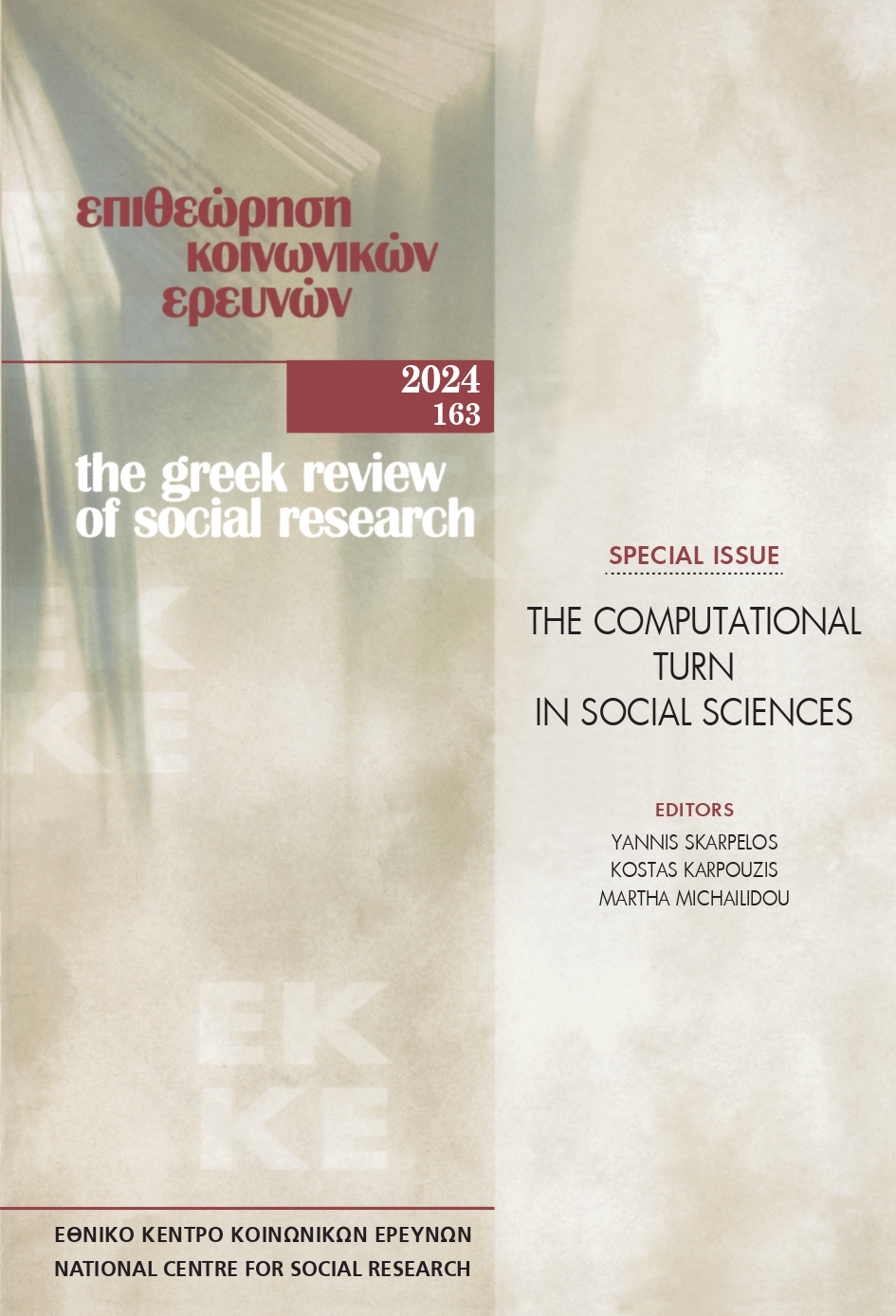‘‘Στην πραγματικότητα δεν ξέρουμε πώς θα μπορούσε να λειτουργήσει’’: Οι front-end και back-end διεργασίες μιας έρευνας δράσης στην Tate

Περίληψη
Η παρούσα εργασία εξετάζει το front-end και το back-end στις διαδικασίες καλλιτεχνικής παραγωγής ως μια μεθοδολογική πρόταση και μεταφορά για τη διεξαγωγή έρευνας σε μουσεία και άλλα πολιτιστικά ιδρύματα στην εποχή της ταχείας τεχνολογικής και υπολογιστικής καινοτομίας. Πέρα από τη χρήση τους στην αρχιτεκτονική λογισμικού, οι δύο αυτοί όροι μπορούν να αποτελέσουν τρόπους ενσωμάτωσης της έρευνας στο εσωτερικό ενός πολιτιστικού ιδρύματος. Βασιζόμενη σε ερευνητικά έργα ενσωματωμένα σε μουσεία καθώς και στις παρατηρήσεις μου από τη μελέτη περίπτωσης του προγράμματος BMW Tate Live: Performance Room, η εργασία διερευνά τον τρόπο με τον οποίο οι πολιτιστικοί φορείς αφομοιώνουν το τεχνολογικό παρόν και το πώς παράγεται πολιτιστική αξία σε αυτό το πλαίσιο. Εξετάζοντας αυτό το πειραματικό πρόγραμμα performance art, το οποίο παράχθηκε ζωντανά στο διαδικτυακό κανάλι της Tate στο YouTube και τις εννοιολογήσεις του ψηφιακού και του κοινού που προέκυψαν κατά τη διάρκεια της ανάπτυξης του προγράμματος, αναδείχθηκε ο τρόπος με τον οποίο η θεσμική εξουσία πάνω στην παραγωγή της καλλιτεχνικής γνώσης μεταφράζεται σε τεχνολογικά μέσα και επιφάνειες διεπαφής. Η αμφιθυμία του μουσείου να επεκτείνει τον καλλιτεχνικό του προγραμματισμό σε ένα ψηφιακό, δικτυωμένο, οικοσύστημα θέτει ευρύτερα ερωτήματα σχετικά με τους τρόπους με τους οποίους τα ιδρύματα σύγχρονης τέχνης μπορούν να κατανοήσουν την τεχνολογική στιγμή και κατά πόσον μπορούν να συμβαδίσουν με ένα υπολογιστικό παρόν και μέλλον.
Λεπτομέρειες άρθρου
- Πώς να δημιουργήσετε Αναφορές
-
Zouli, I. (2024). ‘‘Στην πραγματικότητα δεν ξέρουμε πώς θα μπορούσε να λειτουργήσει’’: Οι front-end και back-end διεργασίες μιας έρευνας δράσης στην Tate. Επιθεώρηση Κοινωνικών Ερευνών, 163, 173–192. https://doi.org/10.12681/grsr.38515
- Ενότητα
- Άρθρα

Αυτή η εργασία είναι αδειοδοτημένη υπό το CC Αναφορά Δημιουργού – Μη Εμπορική Χρήση 4.0.
Οι συγγραφείς των άρθρων που δημοσιεύονται στην Επιθεώρηση Κοινωνικών Ερευνών διατηρούν τα δικαιώματα πνευματικής ιδιοκτησίας επί των άρθρων τους, δίνοντας στο περιοδικό το δικαίωμα της πρώτης δημοσίευσης. Άρθρα που δημοσιεύονται στην Επιθεώρηση Κοινωνικών Ερευνών διατίθενται με άδεια Creative Commons 4.0 και σύμφωνα με την άδεια μπορούν να χρησιμοποιούνται ελεύθερα, με αναφορά στο/στη συγγραφέα και στην πρώτη δημοσίευση για μη κερδοσκοπικούς σκοπούς.
Το Εθνικό Κέντρο Κοινωνικών Ερευνών διατηρεί το δικαίωμα να δημοσιεύει, να αναπαραγάγει, να παρουσιάζει στο κοινό, να διανέμει και χρησιμοποιεί άρθρα που δημοσιεύονται στην Επιθεώρηση Κοινωνικών Ερευνών σε οποιοδήποτε μέσο και μορφή είτε μεμονωμένα είτε ως μέρη συλλογικών έργων, για όλο τον χρόνο διάρκειας προστασίας της πνευματικής ιδιοκτησίας και για όλες τις χώρες του κόσμου. Αυτό περιλαμβάνει ενδεικτικά και όχι αποκλειστικά το δικαίωμα δημοσίευσης των άρθρων σε τεύχη της Επιθεώρησης Κοινωνικών Ερευνών, αναπαραγωγής και διανομής μεμονωμένων αντιγράφων των άρθρων, αναπαραγωγής ολόκληρων των άρθρων σε άλλη έκδοση του Εθνικού Κέντρου Κοινωνικών Ερευνών, καθώς και αναπαραγωγής και διανομής των άρθρων ή περίληψης αυτών με χρήση πληροφορικού συστήματος αποθετηρίου.


